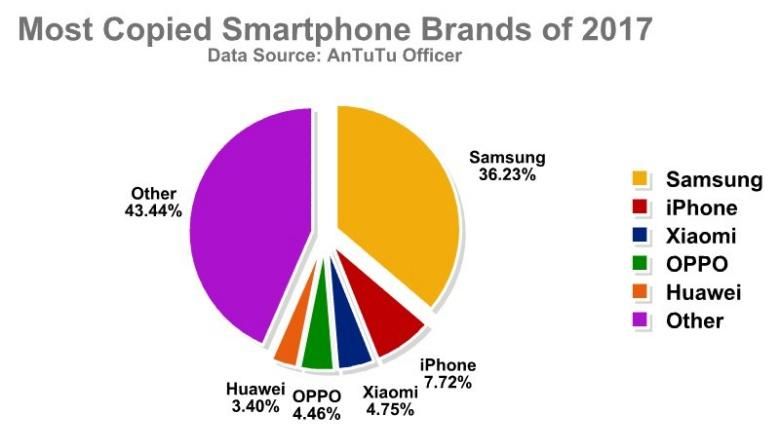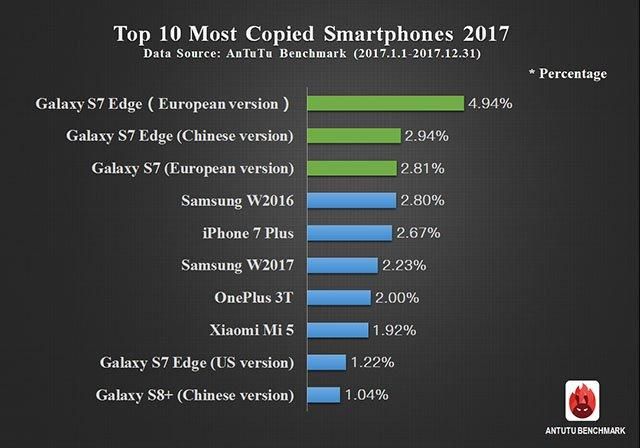AnTuTu is one of the world’s most popular smartphone benchmarking tools, and although its measurements aren’t always a reliable indicator of real-life performance, you can often count on the Chinese app to reveal key specifications and speed results for unreleased devices.
But all the data analyzed and collected by AnTuTu can also be used for research purposes, providing insight into aspects of the mobile industry and market categories you may not often think about.
Case in point, smartphone clones, which seem to be as popular as ever in China, seeing as how 2.64 percent of all the devices benchmarked through AnTuTu between January and December 2017 were apparently copycats of some of the world’s most successful mobile gadgets in recent years.
That may not sound like a big number at first… until you realize it equates to over 460,000 devices based on a total of 17,424,726 smartphones tested by AnTuTu last year. Meanwhile, the two most copied smartphone brands of 2017 are by no means surprising, although their order and especially the gap between first and second place weren’t exactly easy to predict.
If imitation is the sincerest form of flattery, Samsung has plenty of reasons to feel complimented, as Galaxy clones comfortably topped iPhone duplicates, at more than 36 percent “share”, compared to under 8 percent for devices that often followed Apple’s design and hardware direction while naturally running Android instead of iOS.
Xiaomi won the bronze medal, narrowly ahead of OPPO and Huawei, with the “Other” category surprisingly “strong” as well, at over 43 percent. As for actual models, the Galaxy S7 Edge and “regular” GS7 were by far the most copied of 2017, followed by the high-end Samsung W2016 clamshell, iPhone 7 Plus, Samsung W2017, OnePlus 3T, Xiaomi Mi 5, and Galaxy S8+. Interestingly enough, that’s not a lot of new phones, which probably means the cloning process is taking more time nowadays.


